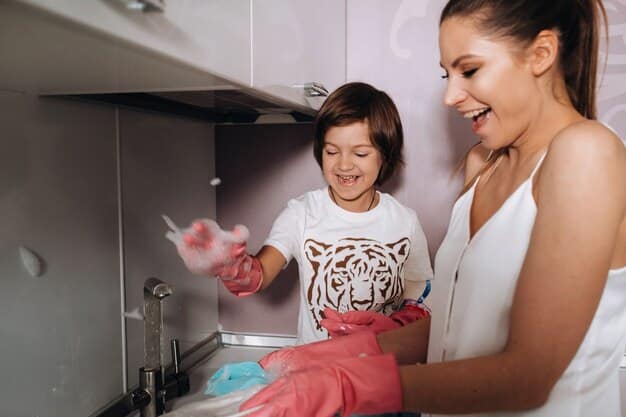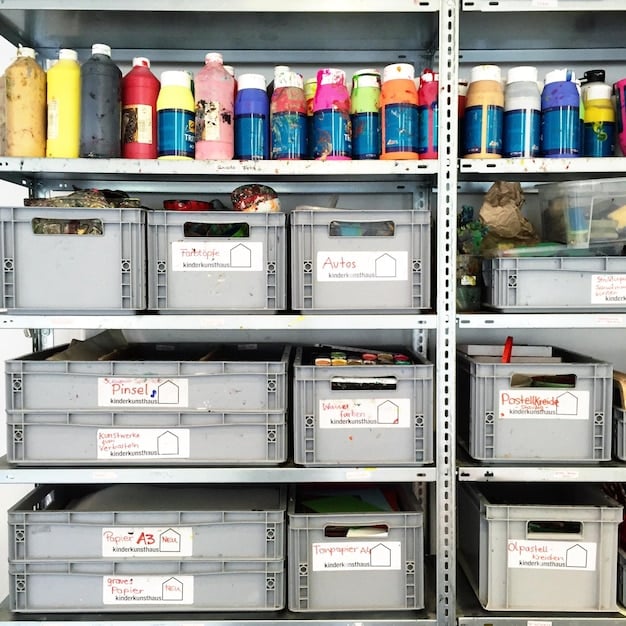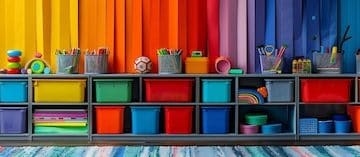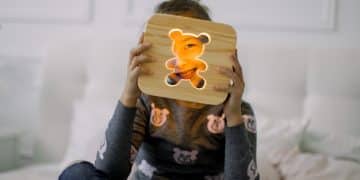Seasonal Toy Care: Extend Toy Life in the US

Seasonal toy care in the US involves cleaning, storing, and rotating toys to protect them from weather damage, prevent mold and mildew, and maintain their appeal for children.
As seasons change in the US, so do the demands on your child’s favorite playthings. Seasonal toy care: tips for extending the life of your child’s favorite toys in the US doesn’t have to be a chore, but a way to help keep toys in good condition for a long time.
Understanding the Impact of Seasons on Toys
Each season brings its own set of challenges for toy maintenance. From the dampness of spring to the harsh sun of summer, understanding these impacts is the first step in effective toy care.
Spring: Combating Moisture and Mold
Spring showers bring more than just flowers; they can also bring moisture that leads to mold and mildew, especially for toys stored in damp basements or garages.
Summer: Protecting Against Sun and Heat
The summer sun can fade colors and warp plastic, making toys look old and brittle before their time. High temperatures can also damage electronic components.
To combat seasonal impacts, consider these tips:
- Inspect toys regularly for signs of damage or wear.
- Store toys in climate-controlled environments whenever possible.
- Use protective covers or containers to shield toys from direct sunlight or moisture.
Understanding how each season affects toys allows for preventative measures, ultimately extending their lifespan. Keeping toys clean, dry, and out of direct sunlight are simple steps that make a big difference.

Cleaning Toys: A Seasonal Ritual
Regular cleaning is essential for maintaining the hygiene and longevity of toys. Different types of toys require different cleaning methods, and seasonal cleaning routines can help prevent the buildup of germs and allergens.
Sanitizing Strategies for Various Materials
From plush animals to plastic blocks, each type of toy needs a tailored cleaning approach.
Eco-Friendly Cleaning Solutions
Using non-toxic and environmentally friendly cleaning products is not only safe for your children but also better for the planet.
Choose the best cleaning method for each type of toy:
- Machine-washable plush toys: Place in a mesh laundry bag and wash on a gentle cycle with mild detergent.
- Plastic toys: Wipe down with a solution of warm water and mild dish soap.
- Wooden toys: Clean with a damp cloth and mild soap, ensuring they dry completely to prevent warping.
Making cleaning a regular part of your seasonal routine ensures that toys remain safe and enjoyable for your children. Effective cleaning practices maintain hygiene and contribute to the overall lifespan of toys.
Smart Storage Solutions for Every Season
Proper storage is vital to protect toys from seasonal damage and keep them organized. Different storage solutions work best for different types of toys and different seasons.

Seasonal Rotation: A Strategic Approach
Rotating toys in and out of storage each season not only keeps things fresh for your child but also protects toys from prolonged exposure to harsh conditions.
Maximizing Space with Creative Storage Ideas
From under-bed storage to wall-mounted shelves, there are many creative ways to maximize your storage space while keeping toys accessible and organized.
Optimize your toy storage with these tips:
- Use clear storage bins: Easy for identifying contents without having to open each bin.
- Label everything: Clearly label each bin with the type of toys and the season they belong to.
- Store in a cool, dry place: Avoid damp basements or hot attics that can damage toys.
Implementing smart storage solutions extends the life of toys by protecting them from environmental factors and keeping them organized. Rotating toys and using creative storage ideas keeps play areas clutter-free and engaging for children.
Repairing Toys: A Sustainable Practice
Instead of discarding broken toys, consider repairing them. Repairing toys not only saves money but also teaches children about sustainability and resourcefulness.
DIY Repair Kits and Tutorials
Many DIY repair kits and online tutorials provide step-by-step instructions for fixing common toy problems.
When to Seek Professional Help
For more complex repairs, seeking help from a professional toy repair service may be the best option.
Get started with toy repairs:
- Gather essential tools: Keep a basic toolkit with glue, screwdrivers, and spare parts.
- Check online resources: Find tutorials and guides for repairing specific types of toys.
- Consider safety: Always prioritize safety, especially when working with small parts or electrical components.
Repairing toys encourages creativity, reduces waste, and prolongs the lifespan of cherished items. Embracing repair as a sustainable practice teaches valuable lessons and saves money in the long run.
Choosing Toys Wisely: Longevity in Mind
Selecting durable and well-made toys is essential for long-term enjoyment and value. Investing in quality toys that withstand the test of time is a smart choice.
Evaluating Toy Materials and Construction
Consider the materials and construction of toys when making a purchase. Durable materials and sturdy construction ensure that toys last longer.
Timeless Toys: Investing in Classics
Some toys never go out of style. Investing in classic toys that offer lasting appeal is a great way to ensure years of enjoyment.
Consider these factors when selecting toys:
- Material quality: Look for toys made from durable, non-toxic materials.
- Construction: Check for sturdy construction and well-attached parts.
- Age appropriateness: Choose toys that are suitable for your child’s age and developmental stage.
Choosing toys wisely not only provides years of entertainment but also contributes to sustainability. Investing in quality and timeless toys reduces waste and ensures lasting value.
Involving Children in Toy Care
Teaching children to care for their toys instills responsibility and appreciation. Involving them in seasonal toy care routines can be a fun and educational experience.
Age-Appropriate Chores
Assign age-appropriate chores to help children learn how to clean and organize their toys.
Making Toy Care Fun and Engaging
Turn toy care into a game or activity to make it more enjoyable for children.
Ways to involve children in toy care:
- Cleaning together: Make cleaning a family activity and teach them how to wipe down toys.
- Organizing games: Turn organizing into a game, such as “find the toy that starts with the letter A.”
- Repair projects: Involve them in simple repair projects to teach them about fixing things.
Involving children in toy care promotes responsibility, teaches valuable life skills, and fosters appreciation for their belongings. Making it a fun and engaging experience encourages them to take pride in their toys.
Conclusion
By implementing seasonal toy care strategies, parents in the US can help extend the life of their children’s favorite toys. Regular cleaning, smart storage, thoughtful repairs, and conscious purchasing decisions all contribute to a more sustainable and enjoyable toy collection.
| Key Point | Brief Description |
|---|---|
| 🧼 Cleaning | Regularly clean toys to remove germs and allergens. |
| 📦 Storage | Store toys in a cool, dry place to prevent damage. |
| 🛠️ Repair | Repair broken toys to extend their lifespan. |
| 🔄 Rotation | Rotate toys seasonally to keep them fresh and engaging. |
Frequently Asked Questions
▼
Clean toys at least once a month, or more often if they are visibly dirty or have been exposed to germs, like after a playdate.
▼
Store toys in airtight containers in a cool, dry place away from direct sunlight to prevent damage from moisture and UV rays.
▼
Use a strong adhesive like epoxy or super glue specifically designed for plastics. Clean the surfaces before applying the adhesive and allow it to dry completely.
▼
Yes, use a solution of water and vinegar, or purchase non-toxic, plant-based cleaning products that are safe for children and the environment.
▼
Make it a fun activity by assigning simple tasks like sorting toys into bins or wiping them down with a damp cloth, praising their efforts.
Conclusion
Following these tips will help you keep your child’s toys clean, safe, and in good condition for years to come. By investing in toy care, you’re not only extending the life of the toys but also creating lasting memories for your children.





